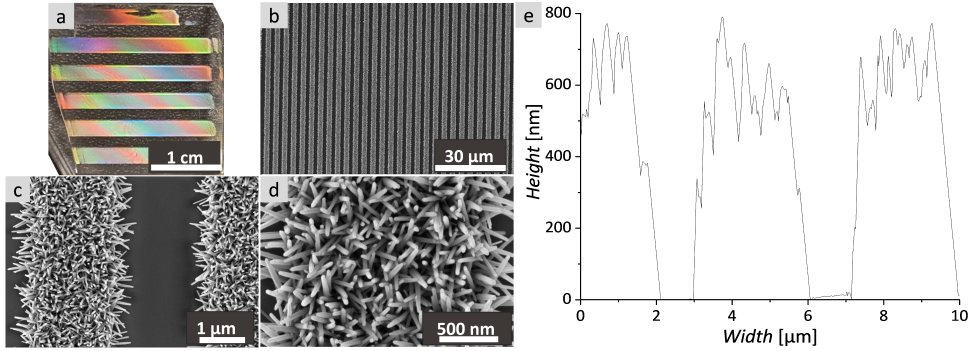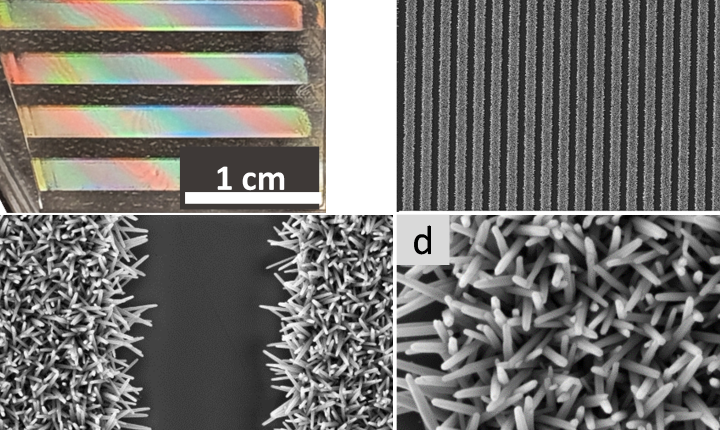Article: Study of the photoluminescence enhancement observed in ZnO nanowire gratings optimally grown by hydrothermal method
Advanced Optical Materials is an interdisciplinary forum for peer-reviewed papers on materials science which focuses on all aspects of light-matter interactions. Last July, an article published by our Functional Materials & Surfaces team was presenting the development of a novel ZnO nanowire (NW) architecture using a soft chemistry approach.
This article highlights the significant outcomes of the ANR SMARtLEDS project (ANR-19-CE08-0001), coordinated by the ICCF in Clermont-Ferrand, which aimed to develop multifunctional layers for LED lighting applications. The project's objectives revolved around enhancing the spectral and spatial extraction of light within LED-based lighting or display devices. This was achieved by combining the commonly used YAG:Ce phosphor in current devices with ZnO nanowires, structured in a controlled arrangement in terms of periodicity and pattern. Adding ZnO nanowires to the phosphor helps improving the spectral emission profile, particularly by optimizing the weak red component of YAG:Ce.
Figure below:
ZnO NW gratings on 2.5x2.5 cm 2 quartz substrate, illustrated by:
(a) macroscopic photography,
(b) (c) (d) low to high magnification SEM images,
(e) AFM profile.

Abstract
An original ZnO nanowire (NW) architecture has been developed, entirely based on a soft chemistry approach, and thoroughly assessed through optical measurements and electromagnetic simulations. This architecture relies on the photoimprinting of a sol–gel ZnO-based photosensitive seed layer combined with the subsequent localized hydrothermal growth of ZnO NWs. The optimization of the elaboration protocol has been shown to lead to uniform and reproducible linear and periodic gratings of ZnO NWs with a width/pitch of 2/4 µm. The NW gratings are compared with full-covered samples (NWs coating) elaborated from a nonimprinted seed layer. A morphological study reveals that NW gratings present a peculiar hedgehog-like profile. Standard and angle-resolved photoluminescence studies demonstrate that the ZnO NWs visible emission is strongly modified by the presence of NW gratings and that its red part is directionally extracted and enhanced by a factor of up to 2. The electromagnetic simulations performed for both samples highlight the role of the gratings acting as coupled microcavities that boost the ZnO emission through light localization and diffractive mechanisms. It enables the extraction of the resonant photons at specific angles and wavelengths.
Read the full article here

